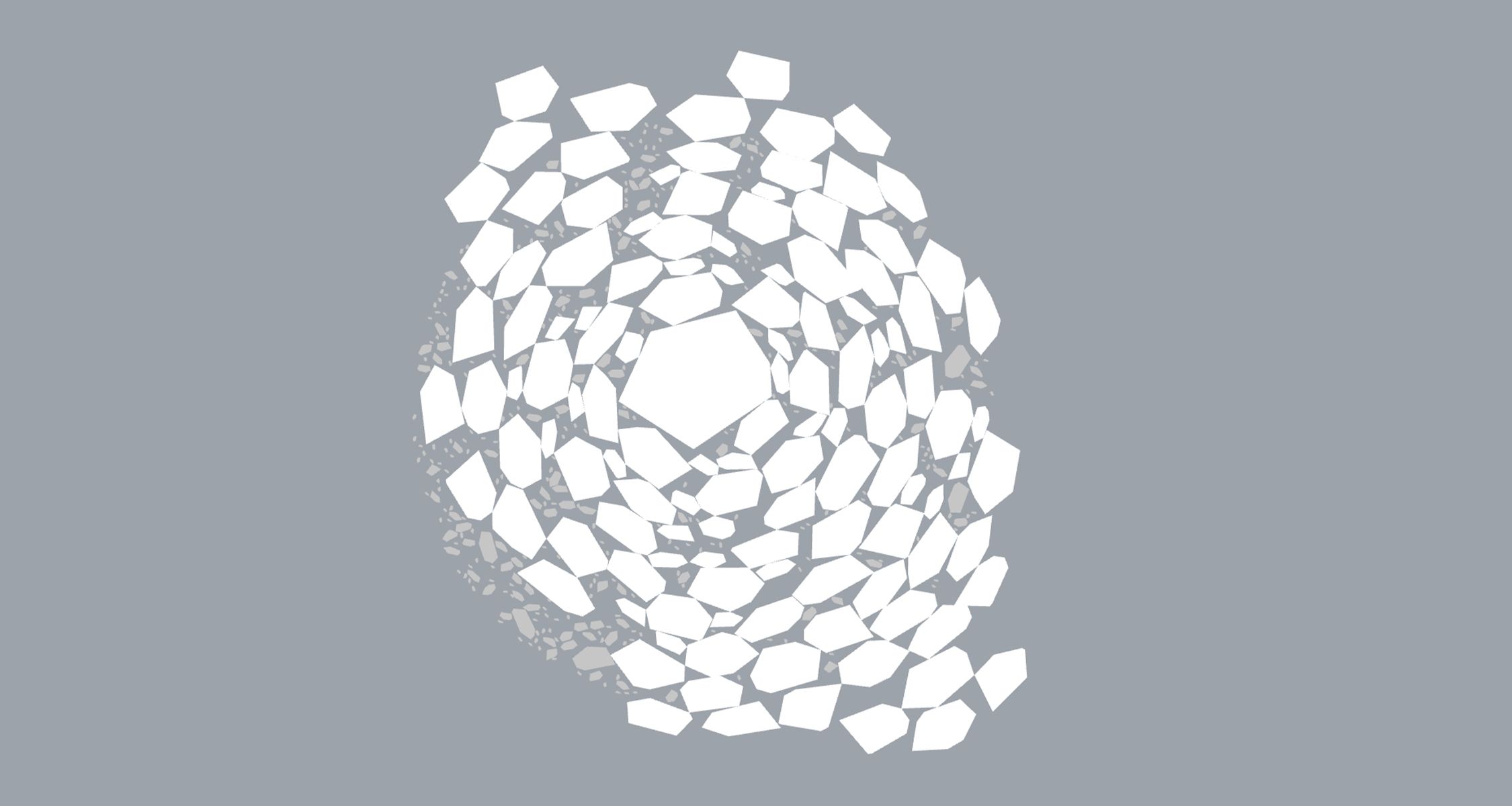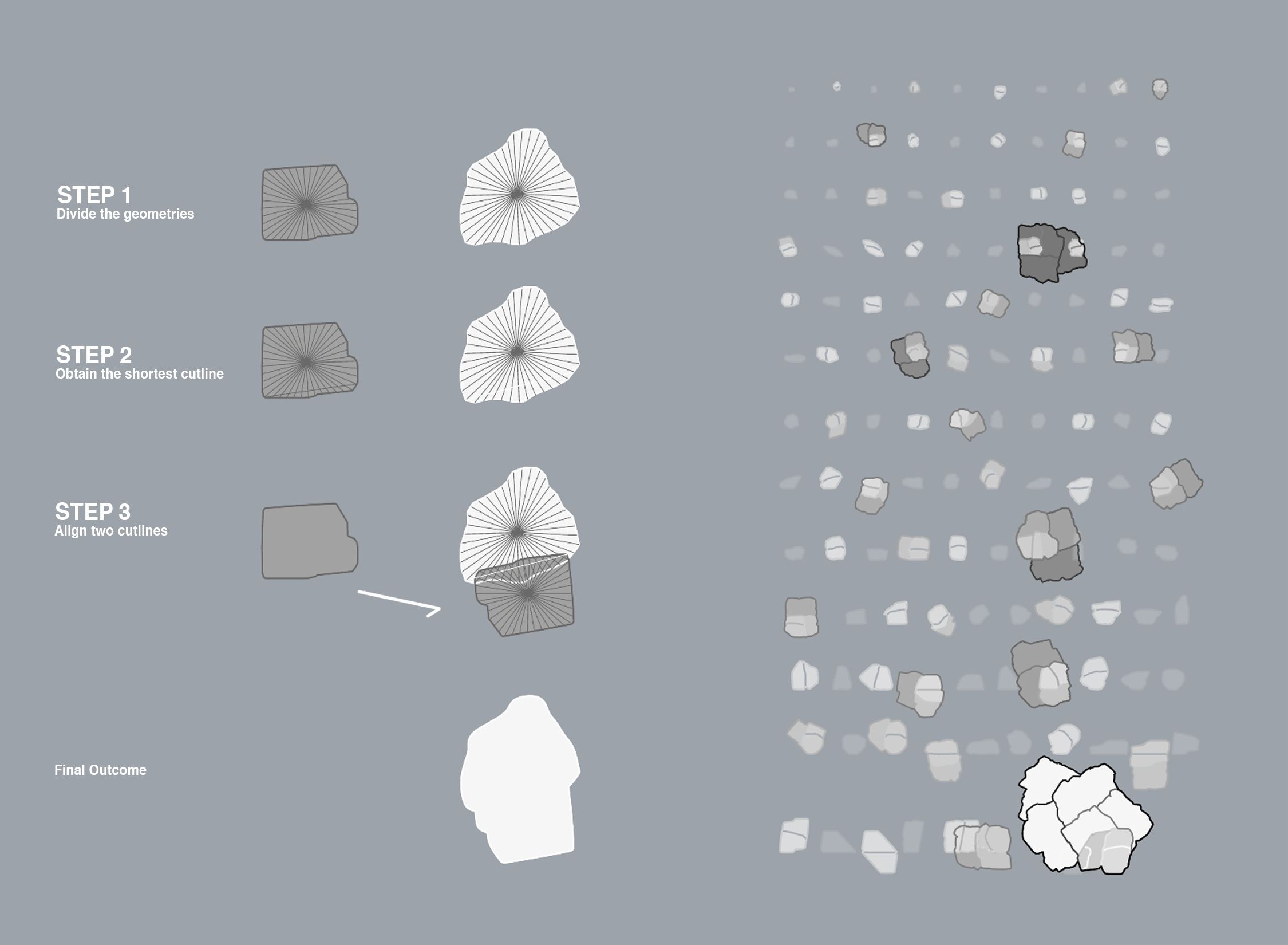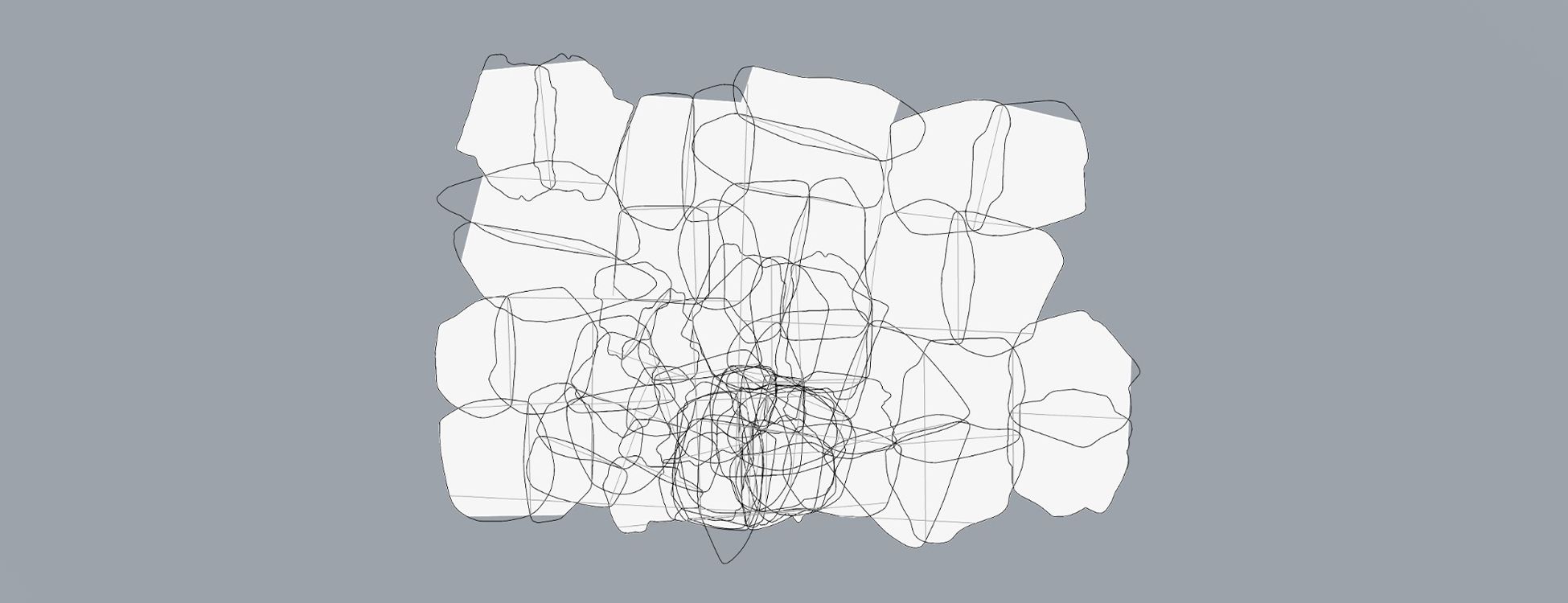Accumulate Irregularity
Different Algorithms for Geometry Packaging

The project draws inspiration from adaptive reuse and the assembly of fragmented materials. Architect Wang Shu's facade design for the Ningbo Museum and the citadel at Sacsayhuaman both involve assembling irregular objects. We explored different algorithms in Grasshopper to assemble irregular geometries, comparing the advantages and drawbacks of each method.
The first method, cutline assembly, calculates the flattest cutline for each geometry by dividing it into multiple angles and sorting fragments by circumference length. This minimizes intersection areas, reducing material trimming.
The second method uses a movement field to pack geometries along a spiral pattern. A central point directs each geometry towards the center, moving to the next when the closest points touch. This method results in a spiral arrangement but creates gaps between geometries due to the lack of intersections.
The third method employs a packing algorithm to fit geometries within a confined boundary. Points within the boundary are selected, and geometries are placed if they don't collide with others. This method allows random insertion and effectively fills gaps left by irregular geometries, avoiding intersections altogether.

